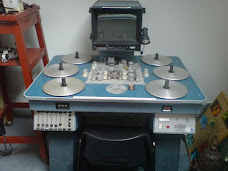Sunday, 4 July 2021
health and safety
history of editing
the company moviola is loacted in hollywood. it allowed editors to study individual shots in their cutting rooms, to determine more precisely the best place to cut the shot.
the vertical oriented moviola's were the standard for film editing in the US until the 1970s when horizontal flatbed editor systems became more common.
this is the flatbed editing system used to edit film for a motion picture. the most common brands is steenback and K-E-M, both of which were invented in germany in the 1930s.the picture is shot on film while the sound is recorded separately. when the editor finds a point to cut from one shot into another, he marks it on both picture and sound rolls, then makes the cut and splices in the next shot.
linear editing is the process of making cuts and edits on film. it must be done sequentially in order to create a final film print of an edited piece. it is necessary for the film format and had been the only way to edit until computers came into prominence for post production.
non-linear editing is a non-destructive editing process. it is achieved by loading the material into the computer from analogue or digital tapes. the editing process creates a new 'tape' by storing all the commands entered by the operator.
from 199, new editing softwares allowed people to edit their own films from home such as Adobe. since then, higher quality softwares have been introduced such as Final cut pro , purchased by apple in 1999.
health and safety
for my animated promotional video, it is important for me to make sure the animator i hire knows about health and safety in the studio such...
-
glass animals- dreamland dreamland is a slow indie song. it is about being in a dream like state, and almost feeling like you don't ev...
-
for my animated promotional video, it is important for me to make sure the animator i hire knows about health and safety in the studio such...
-
edge/split lighting only requires one light source, usually the key light (natural lighting can also work). by removing the fill light, a sh...



